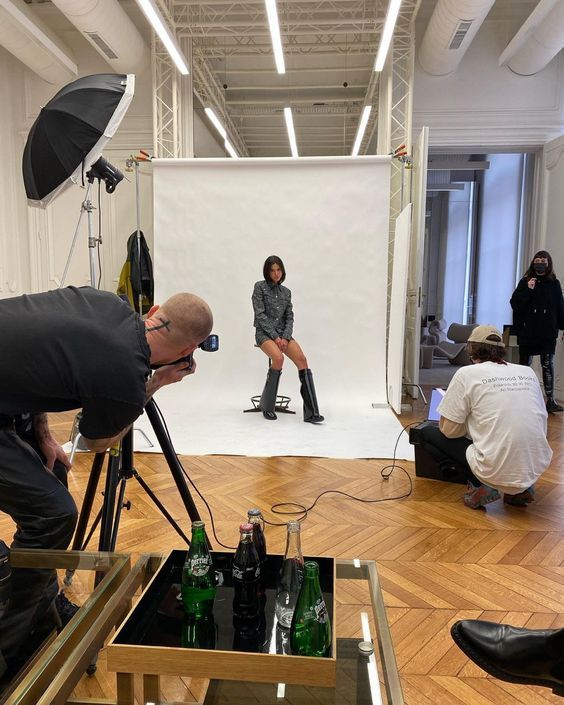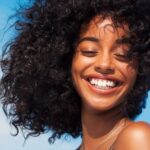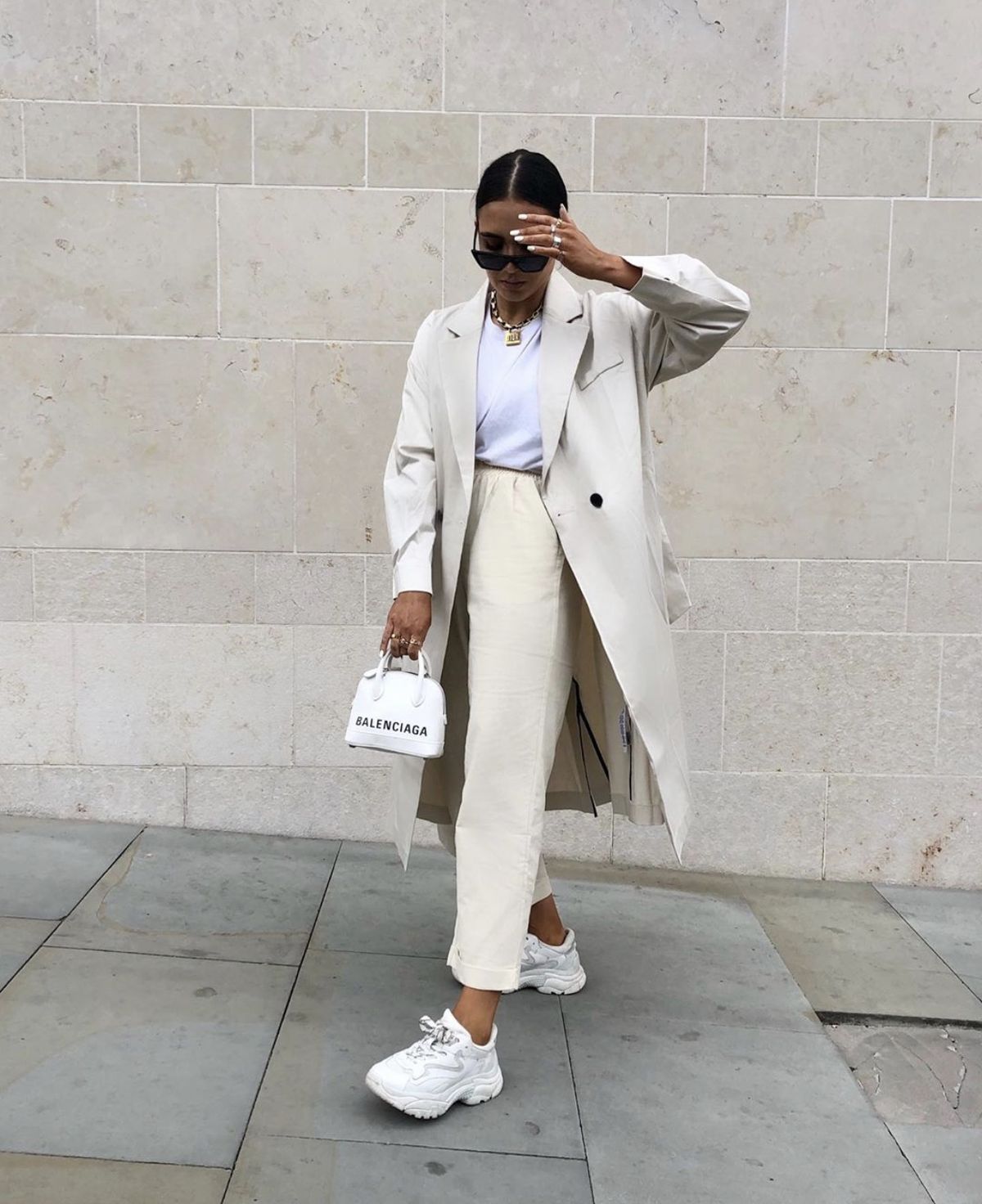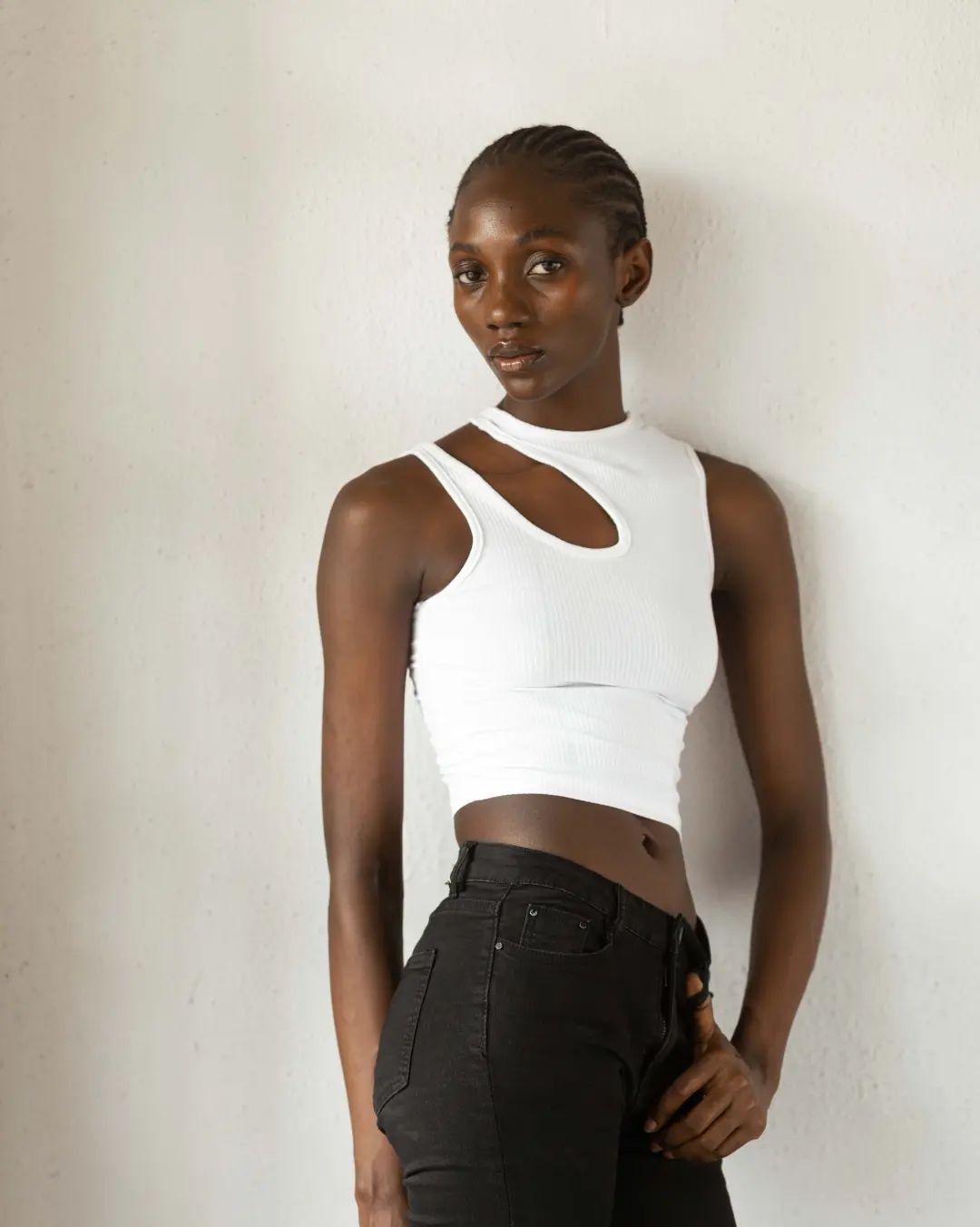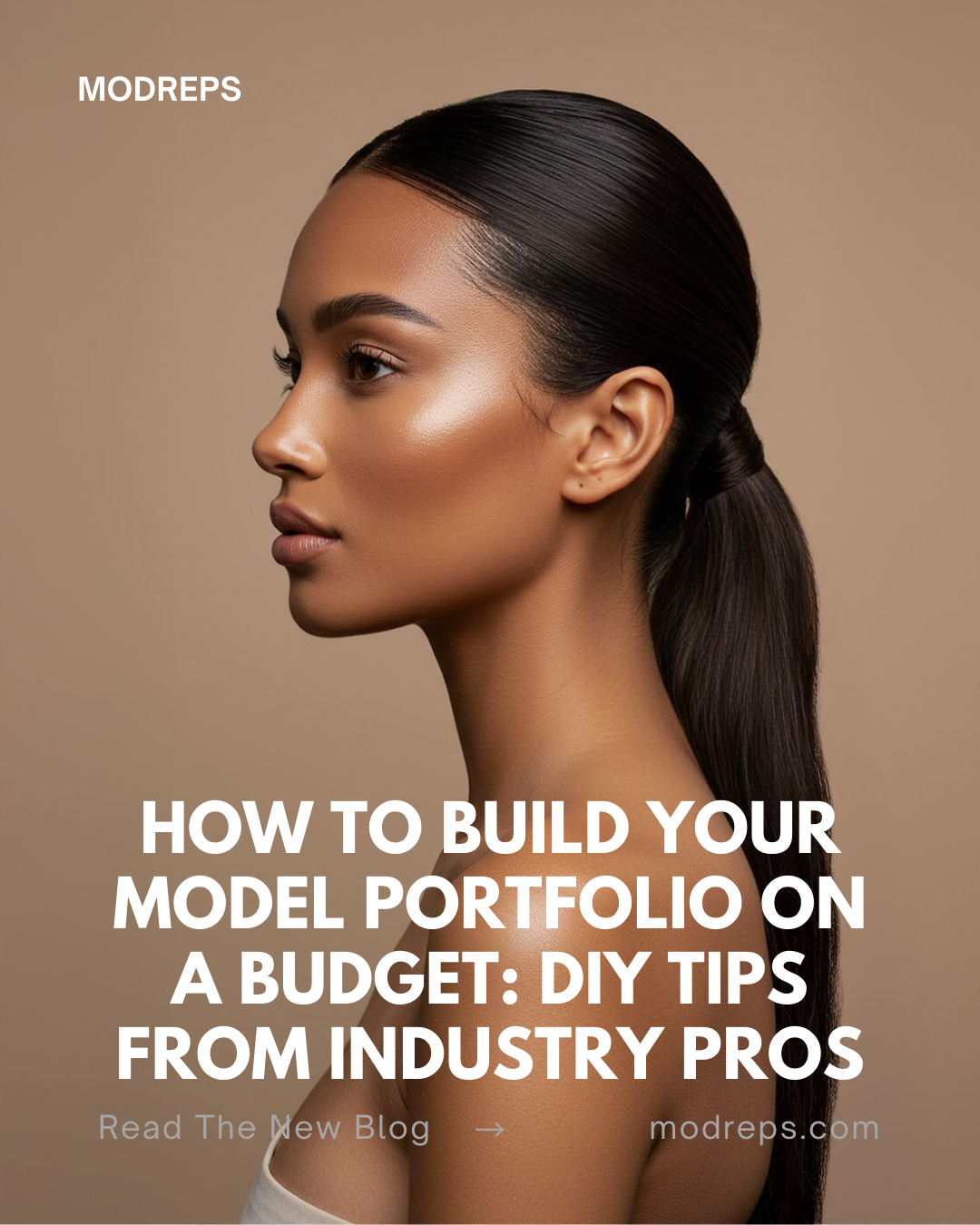Ever scroll through a flawless fashion editorial and wonder how they created that magic? The final images look effortless, but behind every stunning photo is hours of planning, teamwork, and controlled chaos that most people never see.
Today we’re pulling back the curtain on what really happens during a professional fashion shoot, from the 5 AM call time to the final shot at sunset. Whether you’re a model preparing for your first big shoot or just curious about the process, this is your backstage pass to the fashion photography world.
The Team That Makes It Happen
A professional fashion shoot isn’t a one-person show. It’s a carefully orchestrated collaboration between specialists who each bring their expertise to create something bigger than the sum of its parts.
The Photographer leads the creative vision and captures the shots, but they’re also managing the entire team’s energy and timeline. The Fashion Stylist curates every piece of clothing, accessory, and shoe, often pulling from multiple designers and brands. The Hair Stylist creates looks that complement the styling and photography concept. The Makeup Artist enhances the model’s features while staying true to the shoot’s aesthetic. The Model brings the clothes to life and embodies the story being told.
Behind the scenes, there’s usually a Producer handling logistics, Assistants for each department managing equipment and supplies, and sometimes a Digital Tech handling the camera’s connection to computers for instant image review.
The Day Before: Pre-Production
The real work starts long before anyone steps in front of the camera. The day before a shoot is controlled chaos as every detail gets finalized.
The stylist is pulling additional backup pieces because the original dress doesn’t fit quite right. The photographer is testing lighting setups and confirming equipment. Hair and makeup artists are prepping their kits and discussing the looks with the photographer one final time. The location gets scouted again to confirm lighting conditions and backup indoor options if weather doesn’t cooperate.
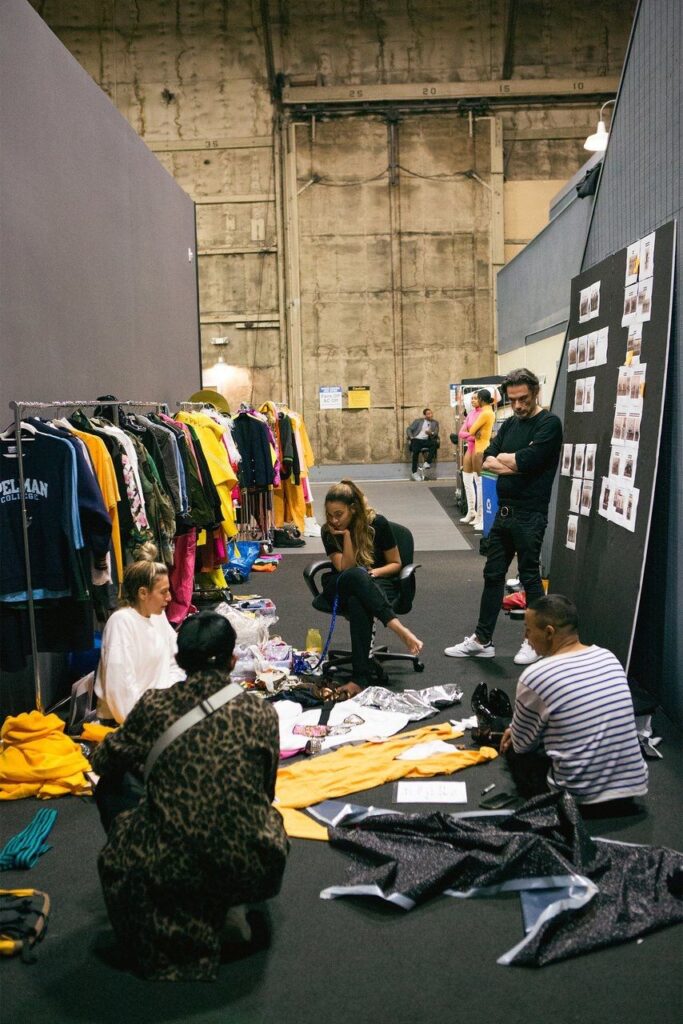
Meanwhile, the model is preparing mentally and physically, getting enough sleep, staying hydrated, and reviewing the concept and mood boards. This preparation makes or breaks the actual shoot day.
5:30 AM: The Day Begins
Typically, Fashion shoots start early to maximize natural light, and the first people on set are usually the photographer and their assistants. Equipment gets unloaded, lights positioned, and cameras tested while the sun is still below the horizon.
By 6 AM, hair and makeup artists arrive and begin setting up their stations with products laid out like surgical instruments. The stylist arrives with racks of clothing, accessories organized in clear boxes, and backup options for every look planned.
The model typically arrives by 6:30 AM, often still half asleep but ready to transform. The first hour is usually quiet preparation while the team gets organized and coffee flows freely
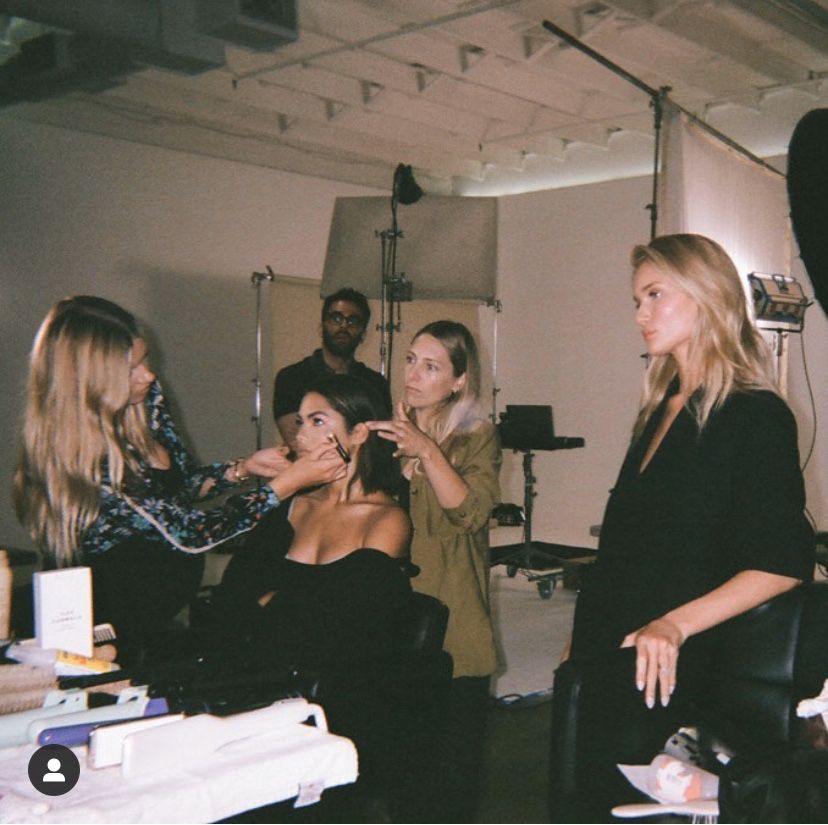
7:00 AM to 10:00 AM: Transformation Time
This is when the magic begins. The model sits in the makeup chair while the artist works their craft, building the look layer by layer. It’s not just about making someone beautiful, it’s about creating a character that fits the story.
Meanwhile, the hair stylist is washing, conditioning, and beginning the styling process. Depending on the look, this could involve intricate braiding, heat styling, extensions, or creating textured, editorial styles that photograph dramatically.
The photographer uses this time to fine-tune lighting and test shots with assistants or stand-ins. The stylist steams garments, checks that all pieces are perfect, and lays out the first look in the order it will be worn.
This isn’t rushed. Good hair and makeup can take two to three hours, and trying to hurry this process usually results in looks that don’t hold up under the hot lights and long day ahead.
10:00 AM: First Look Goes Live
The model emerges fully transformed, and the energy on set shifts immediately. This is the moment everyone has been working toward, and you can feel the excitement as the first photos are captured.
The photographer starts with test shots to check lighting and exposure, making adjustments while the model settles into the character and styling. The first few minutes are about finding the rhythm between model and photographer, establishing the energy that will carry through the shoot.
Hair and makeup artists hover nearby, making small touch-ups between shots. The stylist ensures every piece of clothing is sitting perfectly, adjusting jewelry and accessories that might have shifted.
Once the first look is dialed in, a professional shoot develops its own rhythm. The photographer calls out direction and encouragement while capturing hundreds of frames. “Beautiful! Now give me something more mysterious. Chin down slightly. Perfect, hold that.”
The model is constantly adjusting poses, facial expressions, and energy based on the photographer’s direction and their own instincts about what feels right. It’s a conversation conducted through movement and expression rather than words.
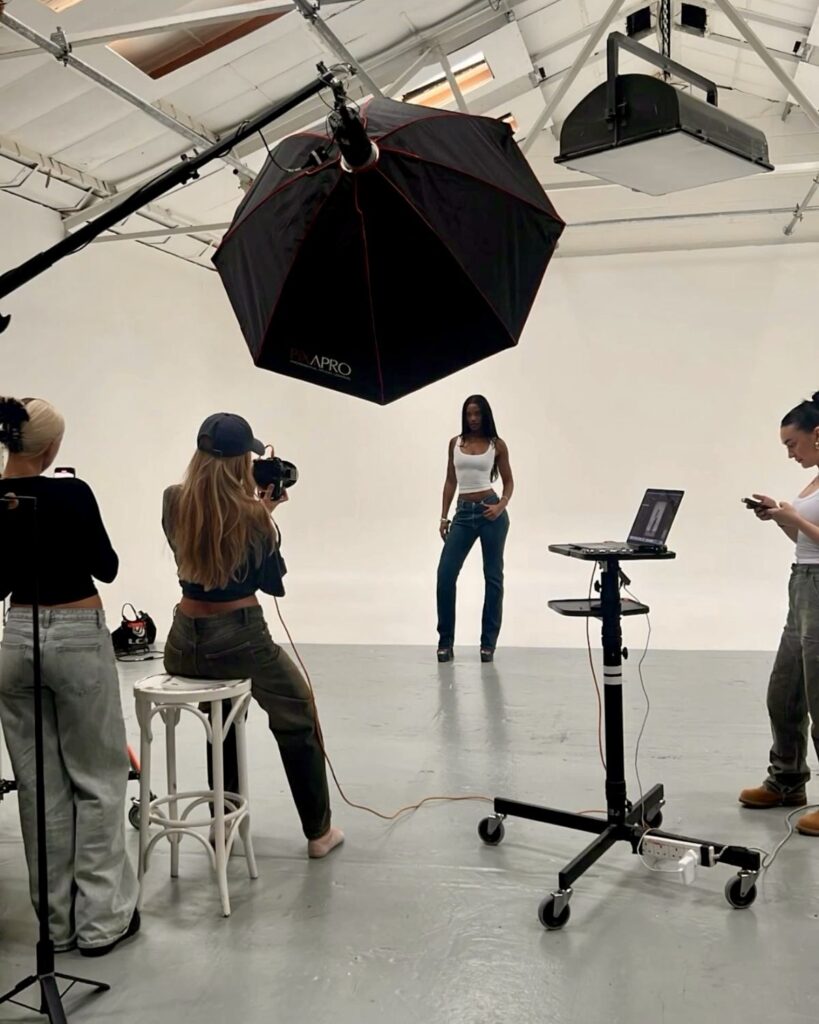
Between every few shots, hair and makeup artists step in for quick touch-ups. Fashion photography lighting is hot and bright, causing makeup to shift and hair to lose its shape. These constant small adjustments are what keep the model looking fresh in frame 300 as they did in frame 1.
Wardrobe Changes: Organized Chaos
Transitioning between looks is when you really see the team’s professionalism. The model steps behind a screen or into a changing area while the stylist has the next outfit ready and waiting, complete with appropriate undergarments, shoes, and accessories.
Hair and makeup artists use this time to make adjustments for the new look. Maybe the hair needs to be messier for the next outfit, or the lip color needs to change to complement a different color palette.
The photographer might adjust lighting for the new look while assistants move equipment or change backgrounds. A smooth wardrobe change takes about 15 minutes, but complicated looks with intricate hair changes can take 45 minutes or more.
1:00 PM: Lunch Break and Strategy Session
Professional shoots always include a proper lunch break, not just for hunger but for the team to recharge mentally. Fashion photography requires intense focus and creative energy from everyone involved, and pushing through without breaks leads to mistakes and diminishing returns.
During lunch, the team often reviews the morning’s shots on a larger screen, discussing what’s working well and what might need adjustment for the afternoon looks. The photographer might decide to change locations, modify lighting, or adjust the approach based on what they’re seeing.
This is also when any problems get addressed. Maybe a piece of clothing isn’t working as expected, or the model’s energy needs to shift for the remaining looks. These conversations happen away from the pressure of active shooting.
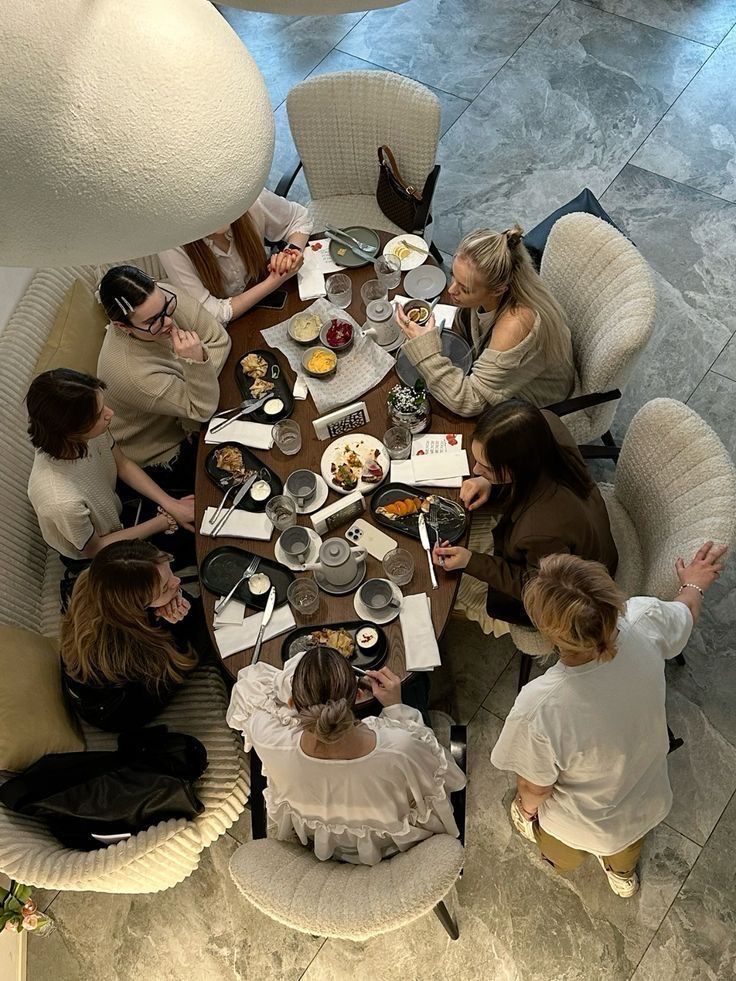
Afternoon: Building on Success
By the afternoon, the excitement of the morning has worn off, and the shoot starts to feel like work. Roles are clear, the model is in sync with the photographer’s style, and the team operates more efficiently. Outdoor shoots demand constant adaptation as the changing light prompts the photographer to reposition setups, with assistants and crew quickly adjusting. stylists juggle keeping clothes clean while fighting wind or dust, and makeup artists are on alert for sweat, shine, or hair sticking in the wrong place.This phase often sparks the most creative shots, allowing room for experimentation beyond the original plan.
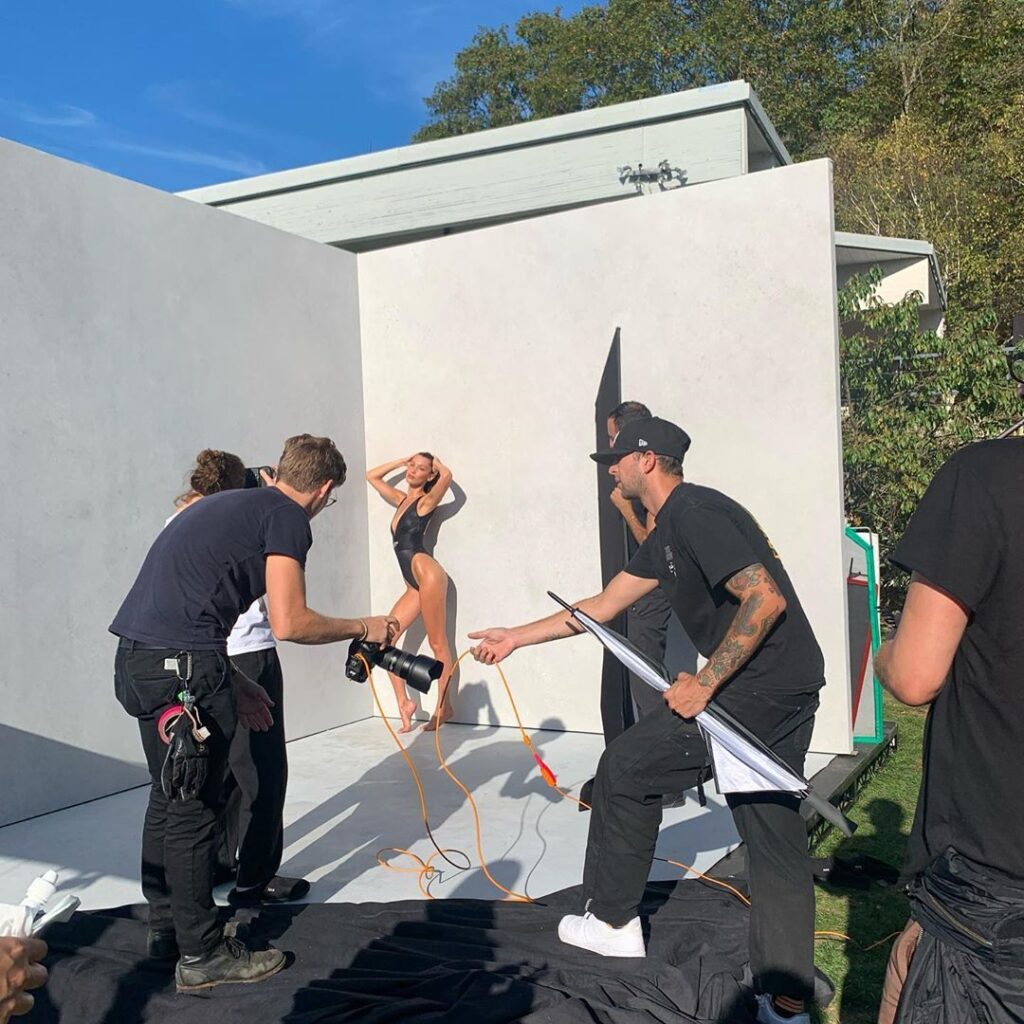
The Golden Hour: Magic Time
As the light softens, tension rises. Golden hour only lasts so long, and everyone knows it’s the last shot at creating magic. There’s no calm, just pressure. The photographer calls out instructions faster, the model pushes through tired feet and stiff poses, and the glam team does touch-ups on the move. Sometimes, frustration breaks through if equipment fails or timing slips, but when it clicks, the results make the chaos worth it.
Wrap: The Exhale
When the photographer calls “That’s a wrap,” relief mixes with excitement to see the results. Equipment gets packed, models remove makeup and change, and the team gathers to review standout shots, sharing genuine reactions. Stylists pack borrowed clothing, hair and makeup artists clean up, and assistants load gear, ensuring the location is left as it was found.
What Happens Next: Post-Production
The model’s work is done, but the photographer’s job is just beginning. Professional fashion shoots often generate 1,000+ images that need to be culled down to the best 50-100 for initial review.
The photographer selects the strongest images from each look and sends them to the client or creative director for feedback. Final image selection happens collaboratively, choosing photos that best tell the story and showcase the clothing.
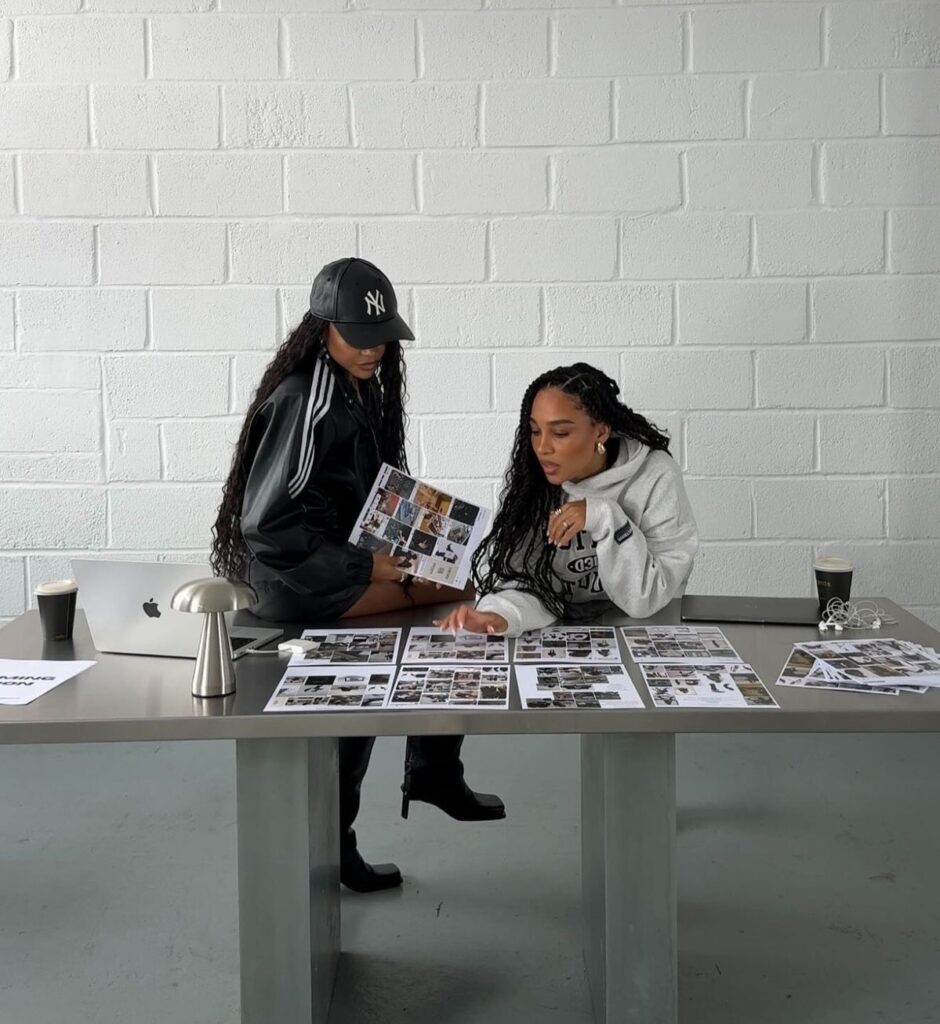
Retouching can take days or weeks, depending on the complexity and number of final images. This isn’t just about removing blemishes, it’s about perfecting lighting, adjusting colors, and creating the polished final images you see in magazines and campaigns.
The Skills That Make Great Shoots
Communication is everything. The best shoots happen when everyone feels comfortable speaking up about what they need or what isn’t working.
Flexibility keeps shoots on track when weather changes, equipment fails, or creative directions shift mid-day.
Professionalism means showing up prepared, staying focused during long days, and maintaining positive energy even when things get stressful.
Collaboration creates images that are stronger than any one person could create alone. The magic happens when everyone contributes their expertise toward a shared vision.
For Models: How to Excel on Shoot Day
Come prepared with clean hair, clear skin, and a positive attitude. Basic preparation allows the team to focus on creativity rather than fixing preventable problems.
Communicate clearly about any concerns or needs. Professional teams want you to succeed and will accommodate reasonable requests.
Stay engaged throughout the day. Long shoots test your endurance, but maintaining energy and focus in frame 500 is what separates amateur from professional models.
Trust the team while bringing your own creative instincts. The photographer is directing, but great models also bring their own interpretation to the vision.
The Reality Behind the Glamour
Professional fashion shoots are simultaneously more mundane and more exciting than people expect. There’s a lot of waiting, technical problem-solving, and repetitive tasks mixed with moments of pure creative magic when everything comes together perfectly.
The final images represent hours of collaboration, planning, and expertise from multiple specialists working toward a shared goal. That “effortless” look you see in magazines required tremendous effort from a team of professionals who made it appear easy.
Understanding this process helps everyone involved do their job better and appreciate the collaborative artistry that creates fashion photography’s most memorable images.
What’s your favorite part of the photo shoot process? Have you experienced something on set that surprised you? Share your behind-the-scenes stories in the comments.
